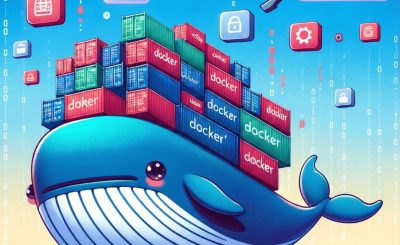Table of Contents
- 1 Introduction
- 2 Understanding the Cannot Allocate Memory Error
- 3 Troubleshooting Steps
- 4 Advanced Solutions
- 5 FAQs
- 5.1 What is the Cannot allocate memory error in Docker?
- 5.2 How can I check the memory usage of Docker containers?
- 5.3 Can configuring swap space help resolve memory allocation issues in Docker?
- 5.4 How do I set memory limits for Docker containers?
- 5.5 What are cgroups, and how do they help in managing Docker memory?
- 6 Conclusion
Introduction
Docker is a powerful tool for containerizing applications, but sometimes you may encounter errors that can be frustrating to resolve. One common issue is the Cannot allocate memory error in Docker. This error typically indicates that the Docker host has run out of memory, causing the container to fail to start or function correctly. In this guide, we will explore the reasons behind this error and provide detailed steps to fix it.
Understanding the Cannot Allocate Memory Error
What Causes the Cannot Allocate Memory Error?
The Cannot allocate memory error in Docker usually occurs due to the following reasons:
- Insufficient RAM on the Docker host.
- Memory limits set on containers are too low.
- Memory leaks in applications running inside containers.
- Overcommitting memory in a virtualized environment.
Troubleshooting Steps
Step 1: Check Available Memory
First, check the available memory on your Docker host using the following command:
free -mThis command will display the total, used, and free memory in megabytes. If the available memory is low, you may need to add more RAM to your host or free up memory by stopping unnecessary processes.
Step 2: Adjust Container Memory Limits
Docker allows you to set memory limits for containers to prevent any single container from consuming too much memory. To check the memory limits of a running container, use:
docker inspect <container_id> --format='{{.HostConfig.Memory}}'To adjust the memory limit, you can use the --memory flag when starting a container:
docker run --memory="512m" <image_name>This command sets a memory limit of 512 MB for the container.
Step 3: Monitor and Identify Memory Leaks
If an application inside a container has a memory leak, it can cause the container to consume more memory over time. Use Docker stats to monitor memory usage:
docker stats <container_id>Look for containers with unusually high memory usage. You may need to debug and fix the application code or use tools like valgrind or memprof to identify memory leaks.
Step 4: Configure Swap Space
Configuring swap space can help mitigate memory issues by providing additional virtual memory. To create a swap file, follow these steps:
sudo fallocate -l 2G /swapfile
sudo chmod 600 /swapfile
sudo mkswap /swapfile
sudo swapon /swapfileAdd the swap file to /etc/fstab to make the change permanent:
echo '/swapfile none swap sw 0 0' | sudo tee -a /etc/fstabStep 5: Optimize Docker Daemon Settings
Adjusting Docker daemon settings can help manage memory more effectively. Edit the Docker daemon configuration file (/etc/docker/daemon.json) to set resource limits:
{
"default-ulimits": {
"nofile": {
"Name": "nofile",
"Hard": 64000,
"Soft": 64000
}
},
"experimental": false,
"init": true,
"live-restore": true
}Restart the Docker daemon to apply the changes:
sudo systemctl restart dockerAdvanced Solutions
Use Cgroups for Resource Management
Control groups (cgroups) allow you to allocate resources such as CPU and memory to processes. To create a cgroup and allocate memory:
sudo cgcreate -g memory:docker
echo 1G | sudo tee /sys/fs/cgroup/memory/docker/memory.limit_in_bytesStart a container with the cgroup:
docker run --cgroup-parent=docker <image_name>Limit Overcommit Memory
Adjust the kernel parameter to limit memory overcommitment:
echo 2 | sudo tee /proc/sys/vm/overcommit_memoryTo make this change persistent, add the following line to /etc/sysctl.conf:
vm.overcommit_memory = 2Apply the changes:
sudo sysctl -pFAQs
What is the Cannot allocate memory error in Docker?
The Cannot allocate memory error occurs when the Docker host runs out of available RAM, preventing containers from starting or running properly.
How can I check the memory usage of Docker containers?
You can use the docker stats command to monitor the memory usage of running containers.
Can configuring swap space help resolve memory allocation issues in Docker?
Yes, configuring swap space provides additional virtual memory, which can help mitigate memory allocation issues.
How do I set memory limits for Docker containers?
Use the --memory flag when starting a container to set memory limits, for example: docker run --memory="512m" <image_name>.
What are cgroups, and how do they help in managing Docker memory?
Cgroups (control groups) allow you to allocate resources such as CPU and memory to processes, providing better resource management for Docker containers.
Conclusion
The Cannot allocate memory error in Docker can be challenging, but by following the steps outlined in this guide, you can identify and fix the underlying issues. Ensure that your Docker host has sufficient memory, set appropriate memory limits for containers, monitor for memory leaks, configure swap space, and optimize Docker daemon settings. By doing so, you can prevent memory-related errors and ensure your Docker containers run smoothly.
Remember to apply these solutions based on your specific environment and requirements. Regular monitoring and optimization are key to maintaining a healthy Docker ecosystem. Thank you for reading the DevopsRoles page!

